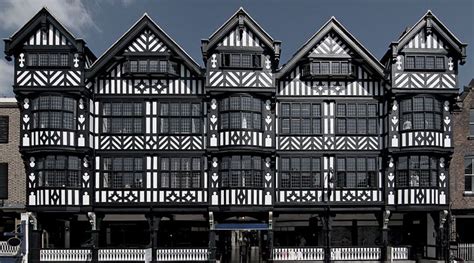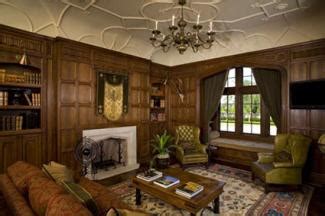tudor style buildings Tudor Revival Style Architecture: Architecture inspired by traditional Tudor elements but adapted for modern construction. Tudor Style Architecture Characteristics: Key features defining Tudor architecture, including gables, . White Mage Leveling Guide. Gear and Job Quests. Keep up to date with job quests; job quests will give you solid spells or vital gear. Make sure your gear has mind stat on it. You should always aim to keep your gear up to date, roll for dungeon gear with mind, and spend your tomestones on tomestone gear to equip it when you hit 50, 60, 70, .The level 90 ultimate raids, Dragonsong's Reprise (Ultimate) and The Omega Protocol (Ultimate) have specific BiS sets for each job that matches their item level sync (605 and 635, respectively). See the above link to the Balance.
0 · who created tudor architecture
1 · tudor interior design characteristics
2 · tudor colonial style home
3 · traditional tudor style homes
4 · traditional tudor house
5 · pictures of tudor style houses
6 · famous tudor architects
7 · characteristics of a tudor house
Create FINAL FANTASY XIV crafting lists and collaborate with others, set gathering alarms, simulate crafting rotations, and more. Create crafting lists and collaborate with others, set gathering alarms, simulate crafting rotations, and more. Brought to you by . undefined. undefined. v11.0.41. EN. 13:52 .
Tudor style, type of British architecture, mainly domestic, that grafted Renaissance decorative elements onto the Perpendicular Gothic style between 1485 and 1558. The Tudor style in architecture coincides with the first part of . Tudor architecture has a rich and fascinating history, and its influence is present in many structures today. From palaces and castles to private homes, the style has a timeless .
Tudor Revival Style Architecture: Architecture inspired by traditional Tudor elements but adapted for modern construction. Tudor Style Architecture Characteristics: Key features defining Tudor architecture, including gables, . Tudor-style houses come in all sizes, with the smaller frames resembling humble but whimsical cottages and larger homes resembling the romantic ideal of English country manors. The.
Tudor architecture, a style that flourished in England from the late 15th century to the early 17th century, is one of the most recognizable and beloved architectural styles in .“The enduring charm of Tudor architecture lies in its unmistakable character and timeless appeal. From the intricate timber framing to the majestic Tudor gatehouses, these buildings hold stories of a bygone era, enchanting us with . Tudor architecture is a style of building that started in England and Wales from 1485 to 1603. It blends elements from the Renaissance with the older Perpendicular Gothic look. You'll know Tudor homes by their half-timbered . By Katie Barton. | Published on Jan 9, 2023. Tudor architecture originated in England and Wales during the Tudor period of 1485 to 1603. Tudor-style homes feature half-timbered frames that contrast their white stucco .
The architecture of early Tudor England displayed continuity rather than change. Churches great and small were built in the Perpendicular Gothic style of the later Middle Ages. Later in the 16th century, however, the great country .
Tudor-style houses were typically designed with interiors that complemented the exterior in terms of design style. The asymmetry of the front facade of the house also enhanced the interior layout .
The Origins of Tudor Architecture. Tudor Period Houses originated in England between the late 15th and early 17th centuries, marking a shift from medieval Gothic structures to more personal, home-oriented spaces. A few things . Tudor architecture, a style that flourished in England from the late 15th century to the early 17th century, is one of the most recognizable and beloved architectural styles in British history.Spanning the reigns of the Tudor monarchs (1485-1603), this architectural period left an indelible mark on England’s built landscape, from humble cottages to grand palaces. In Tudor style houses, several building materials are used for different parts of the property, including bricks, wood, stucco, and stone. The first floor, for example, is normally built using bricks and stone, while the upper floors consist of wood and stucco. The American Tudor houses are mostly built with half-timbering and stone as their . Tudor Revival Architecture. Tudor Revival architecture refers to the revitalization of the Tudor style, which happened in England and the United States from about 1860 to 1940. In 1860, British architect, Norman Shaw, built a Tudor Style mansion called Craigside. Shaw envisioned a “future fairy palace” with many authentic Tudor features.
Characteristics of Tudor Style Houses. Tudor Homes Today: A Guide for Architecture Enthusiasts. 1. Steep Gable Roofs. One of the most visually striking features of Tudor architecture is the steeply pitched gable roof, which is both functional and aesthetically appealing.. Functionality: Steep roofs prevent water buildup by allowing rain and snow to slide .Tudor architecture is an architectural style that emerged between the 15th and 16th centuries when the Tudor family came into power in Britain.It is a transitional architectural style with an amalgamation of characteristics of Renaissance and Gothic architectural styles. The most prominent feature of a Tudor-style building is the exposed wooden beams and the .Origins of the Name: The style is named after the Tudor dynasty, which included notable monarchs like Henry VIII and Elizabeth I. However, many features of what we now consider “Tudor” architecture were developed before or after the Tudor period. Gardens and Surroundings: Many traditional Tudor houses feature lush, elaborate gardens, which are a .This simple cottage, Ascott House in Buckinghamshire designed c. 1876 by George Devey, is an early example of Tudorbethan influence Half-timbering, Gothic Revival tracery and Jacobean carved porch brackets combine in the Tudor Revival Beaney Institute, Canterbury, built in 1899 Tudor Revival architecture, also known as mock Tudor in the UK, first manifested in .
Tudor architecture came about as the final building design style of the medieval period. While the style’s name is attached to the dynasty that began with King Henry VI and ended with Queen Elizabeth, Tudor architecture doesn’t have quite as long a period covering the years from 1500 to 1560 and Elizabethan Style beginning thereafter.Tudor-style buildings are still being constructed, and the use of modern technologies and sustainable materials is helping to ensure their longevity. By preserving and restoring historic Tudor buildings, we can continue to appreciate their unique beauty and character, while also contributing to the preservation of cultural heritage. .Tudor and Elizabethan architecture (1485-1603) Comparative peace under the Tudor monarchs brought prosperity to England, Wales and Ireland. The wealth of great landowners - the Crown, the aristocracy and the Church - could be poured into building. It .

Anthony Masterson. The facade of a Tudor-style home is often dominated by one or more prominent, steeply pitched cross gables. This home features two front gables and brick wall cladding.Brick became the preferred wall surface for even the most modest Tudor cottages after masonry veneering was popularized in the 1920s. The arches surrounding the portico . In vernacular architecture, there’s another famous visual style that falls under the Tudor remit – the half-timbered building. This is best known thanks to its modern descendant, the questionably tasteful mock-Tudor style, . Tudor style architecture is a European style of architecture that emerged in the late 15th century and remained popular until the mid-17th century. Tudor style architecture is characterized by its half-timbered construction, which features exposed wood framing, often in a herringbone or checkerboard pattern.
Each and every home style has its pros and cons – and it all depends on your needs as a homeowner. Find out some of the common pros and cons of Tudor style houses to determine if it’s the right style for your .Tudor style houses usually had casement windows grouped in rows of three or more framed in either wood or metal. Double-hung windows were less common. Windows were often divided into six or eight panes and were sometimes made up of rectangles and other times arranged in a diamond pattern. Windows were usually placed symmetrically in the main gable.
who created tudor architecture
tudor interior design characteristics
The forthcoming monograph The Tudor Home (Rizzoli, ) explores how the popular architectural style has evolved in the U.S. Author Kevin D. Murphy, chair of art history at Vanderbilt University .
Tudor architecture began in England during the late 15th century, evolving as the country transitioned from the medieval Gothic style to the early Renaissance. Named after the Tudor dynasty, which ruled from 1485 to 1603, the style emerged as England found political stability after the Wars of the Roses.What is commonly referred to as Tudor architecture is technically Tudor Revival architecture. The series of Tudor home styles in this gallery are all Tudor Revival architectural style (but commonly referred to as simply "Tudor").

tudor colonial style home
Learn about Tudor architecture, Tudor style houses, and Tudor revival architecture. Some English Tudor houses are old, others are modern Tudor architecture. Updated: 11/21/2023
traditional tudor style homes
Tudor Revival type of architecture was so intertwined with politics that Robert Bell Hamilton, who has been described as Australia’s foremost proponent of the Tudor Revival style, became the member for Toorak for the Liberal and Country Party. This movement made Tudor-style houses popular again, especially in the United States, particularly in the wealthy suburbs of the DC Metro area and San Francisco, during the 1900s. The timeless allure of Tudor houses continues to resonate in the 21st Century. These modern versions of historic homes are renowned for their asymmetrical floor plans .Tudor architecture followed the Perpendicular style and, although superseded by Elizabethan architecture in the domestic building of any pretensions to fashion, the Tudor style still retained its hold on English taste. The four-centered arch , now known as the Tudor arch , was a defining feature of the period.The Tudor style was popular across England, from the grand palaces of royalty to the timber-framed homes of everyday people. The influence of Tudor architecture can still be seen in England today, as many original Tudor buildings have been preserved or restored, and the style has been emulated in modern architectural designs across the globe.
While this style of building did occur during the reign of the Tudors and earlier, it has been popular enough to continue as a building pattern to this very day. . Most "Tudor" black and white buildings do not date from the 16th century, but were built during later "revival" periods. However, some towns have managed to preserve their original .
traditional tudor house

Dungeon Name. Level. Unlock Quest. Copperbell Mines (Hard) 50. Out of Sight, Out of Mine. Haukke Manor (Hard) 50. Maniac Manor. Halatali (Hard) 50. This Time's for Fun. Brayflox's Longstop (Hard) 50. Curds and Slay. The Stone Vigil (Hard) 50. Blood for Stone. The Tam-Tara Deepcroft (Hard) 50. Corpse Groom. Sastasha (Hard) 50. It's .
tudor style buildings|traditional tudor house




























